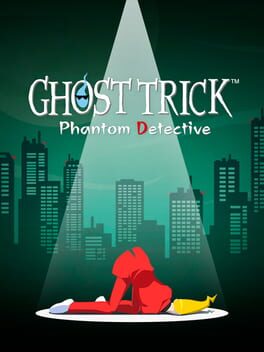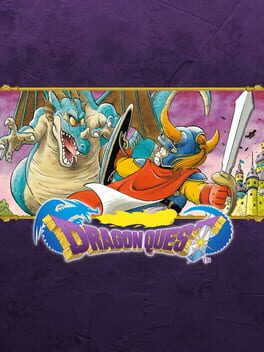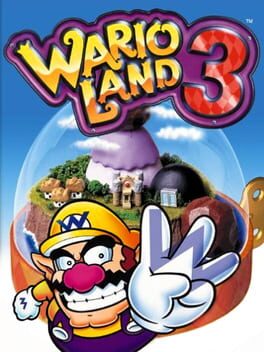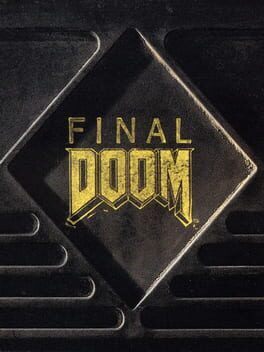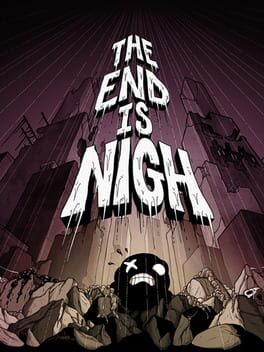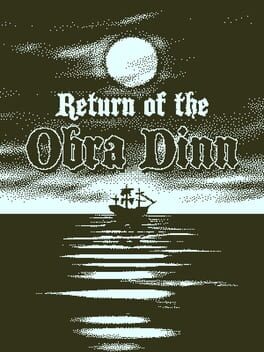dac
This was a game I adored way back when I played it in 2010 on a DS. This is a game I adored replaying in 2023, remembering the big twists but having forgotten the details of the story. It is Shu Takumi's magnum opus, one of the greatest games to come out of its generation, and would still be even if it came out today. A lot of people will mention the usual detective story stuff about going in blind for maximum impact, so I'll mention something else:
Ghost Trick is a beautifully animated game. You'd expect this from the same team that brought the Ace Attorney series to life, but Takumi and his team poured their heart into each and every single of this game's characters and how they move. And it is everything - from your detective friend wolfing down a whole chicken to a poor rat getting brutalised inside the walls of an exotic apartment. From a well respected investigator's extravagant moves to what's basically known as the Panic Dance - you'll know it when you see it. From deadly contraptions to setting up your own life-saving contraption. And on a more mundane scale, even the way everyone walks, climbs, crawls their way through the game is worthy of praise.
Also you'll meet and fall in love with Missile the Pomeranian, the singular best dog in video games. I'm not spoiling that character in particular.
This game is (still) one of my favourites.
Ghost Trick is a beautifully animated game. You'd expect this from the same team that brought the Ace Attorney series to life, but Takumi and his team poured their heart into each and every single of this game's characters and how they move. And it is everything - from your detective friend wolfing down a whole chicken to a poor rat getting brutalised inside the walls of an exotic apartment. From a well respected investigator's extravagant moves to what's basically known as the Panic Dance - you'll know it when you see it. From deadly contraptions to setting up your own life-saving contraption. And on a more mundane scale, even the way everyone walks, climbs, crawls their way through the game is worthy of praise.
Also you'll meet and fall in love with Missile the Pomeranian, the singular best dog in video games. I'm not spoiling that character in particular.
This game is (still) one of my favourites.
2004
Dragon Quest is a game that is almost forty years old. I played a version of it that came out more than two decades ago. And while today it resembles more an ideal first project for a young kid given RPG Maker, Dragon Quest became one of the most pleasant gaming experience I had this year.
The game gives you a simple objective – slay the dragon lord – and then drops you into the world and lets you figure it out. And for how simple the premise is, for how simple fighting monsters is, for how simple exploring is, it all works in favor of the game itself. There was a joy in taking my knight as far as I possibly could into uncharted territory, to find a new town to visit or a section of the world with tougher monsters, sometimes both. And then to either come back to a nearby town with my findings, or push too far and be forced to recall back to the castle, or simply die and revive back to the King with half my gold gone – it helps to wander when the only penalty for screwing up is having to travel a bit more and/or losing resources that are easily replenished. In town, the goal was to upgrade my equipment the best I could and query the population for gossip: a girl in a cave, a secret buried beneath a tree, what golems are weak to. Taking notes, then venturing outward with this knowledge. Repeat until the dragon lord is defeated, with a few detours along the way to get to him.
Once again, it is a very simple game. But even multiple console generations later, it works because the simplicity of it all and the general lack of consequences let my curiosity take over to piece the entire quest together. Even if I am not a Japanese salary-man in the 80s, I can easily see how such a game could enchant a country this well, even decades after the fact. The enchantment still had its effect on me after all.
I recommend you play this game.
The game gives you a simple objective – slay the dragon lord – and then drops you into the world and lets you figure it out. And for how simple the premise is, for how simple fighting monsters is, for how simple exploring is, it all works in favor of the game itself. There was a joy in taking my knight as far as I possibly could into uncharted territory, to find a new town to visit or a section of the world with tougher monsters, sometimes both. And then to either come back to a nearby town with my findings, or push too far and be forced to recall back to the castle, or simply die and revive back to the King with half my gold gone – it helps to wander when the only penalty for screwing up is having to travel a bit more and/or losing resources that are easily replenished. In town, the goal was to upgrade my equipment the best I could and query the population for gossip: a girl in a cave, a secret buried beneath a tree, what golems are weak to. Taking notes, then venturing outward with this knowledge. Repeat until the dragon lord is defeated, with a few detours along the way to get to him.
Once again, it is a very simple game. But even multiple console generations later, it works because the simplicity of it all and the general lack of consequences let my curiosity take over to piece the entire quest together. Even if I am not a Japanese salary-man in the 80s, I can easily see how such a game could enchant a country this well, even decades after the fact. The enchantment still had its effect on me after all.
I recommend you play this game.
2000
This review contains spoilers
This was the one Wario Land game I loved as a kid, and playing it again more than two decades later, my child self's tastes were underdeveloped, to say the least. Wario Land 3 is a game with a lot of ideas, some good like its non-linear structure, other undercooked like the entire day/night system, and others not well executed at all, like the golf minigame and that one boss fight with the rabbit. Also there is some really nasty precision platforming and I really feel Wario Land is not the place for these kind of things.
However, I'll agree with my two decades younger self (and he'll agree with me) on one point: Wario Land 3 has a pretty damn fine final boss. Because, in a stunning display of art, the Nintendo devs decided this boss would have the only move in the entire game that can outright kill Wario, complete with a game over screen you can't get anywhere else. To reiterate, this is not a negative, this is a genuinely cool moment, and it made it so even if I didn't like Wario Land 3 as much as I did before, I could never get mad at it. It has justified its own existence.
Otherwise the game was okay, I guess.
However, I'll agree with my two decades younger self (and he'll agree with me) on one point: Wario Land 3 has a pretty damn fine final boss. Because, in a stunning display of art, the Nintendo devs decided this boss would have the only move in the entire game that can outright kill Wario, complete with a game over screen you can't get anywhere else. To reiterate, this is not a negative, this is a genuinely cool moment, and it made it so even if I didn't like Wario Land 3 as much as I did before, I could never get mad at it. It has justified its own existence.
Otherwise the game was okay, I guess.
2008
The most notable game of an indie gamedev contest it didn't even win. The trick of Eversion is even if you know what it is really about (and the original freeware opened with a Lovecraft quote so it's not exactly subtle about it!) there is still plenty of sights and surprises in this game to keep you on your toes, along with multiple and secret endings to find.
I liked this game.
I liked this game.
1996
It's easy to dismiss Final Doom as that expansion pack with The Plutonia Experiment, and all its chaingunners, hard difficulty and that maze with all the arch-viles. In reality, Final Doom is the expansion pack with The Plutonia Experiment, one of the most important work in Doom modding history, one that paved the way for the near entirety of the scene in general, made by Dario and Mario Casali who should have a more legendary status among video games than they have.
Also yes, it has that maze with all the arch-viles. But that map is one of the best, most creative one you'd see at the time! In fact, how Plutonia evolves this arch-vile monster from the pseudo-boss barely seen in the original Doom 2 into a monster to freely use normally, if one that is dangerous left to its own devices?
Also also there's something called Evilution as a bonus. Who cares, Plutonia is all that matters.
Also yes, it has that maze with all the arch-viles. But that map is one of the best, most creative one you'd see at the time! In fact, how Plutonia evolves this arch-vile monster from the pseudo-boss barely seen in the original Doom 2 into a monster to freely use normally, if one that is dangerous left to its own devices?
Also also there's something called Evilution as a bonus. Who cares, Plutonia is all that matters.
If you ever wondered how bad controls can thoroughly wreck what would be a very well designed puzzle game, play this. An entire game, with some of the best designed puzzles I've seen in its genre, and yet it's built around the worst control scheme known to man - I swear 50% of my time was spent rewinding because the controls wouldn't cooperate with how my brain thinks things should move.
I disliked this game.
I disliked this game.
2017
Better than Super Meat Boy don't @ me
...Alright, I'll elaborate. The Apocalypse has happened, and Rich Evans goes adventuring into a world full of spikes, cancerous flesh and secret areas to find a friend. Anyone familiar with Edmund McMillen's artistic style will be right at home - I'm not repulsed by it, so everything is alright here. Also familiar is the platforming through tight spaces, launching yourself off hooks and ledges, avoiding instakill hazards, sometimes going off the paved road to collect tumors; this one controls a bit slower, but still controls wonderfully other than it being hard to hang on ledges with spikes on them - airborne movement has just the right amount of controls for it, and level design doesn't really fall into dickery territory. Other than the birds. Once you'll see them, you'll know.
What TEIN does really well though is collectibles. There are hidden cartridges unlocking optional retro-styled levels. Collectible-locked optional areas. Locked areas to be unlocked with keys you'll find much later. But among them all, the tumors you find in almost every screen have a simple yet very cool twist to them: in The End Is Nigh's 'dark world' (Because of course this game would have a dark world section!), these tumors turns into your usual video games lives. If you haven't collected much of them, getting through each part of the dark world might be a bit arduous, but it gets a bit easier once you have 200 or so lives to spend.
Also, this game got some good music. Can't go wrong with some good classical music remixes. (And of course Night on Bald Mountain is featured!)
I recommend you play this game.
...Alright, I'll elaborate. The Apocalypse has happened, and Rich Evans goes adventuring into a world full of spikes, cancerous flesh and secret areas to find a friend. Anyone familiar with Edmund McMillen's artistic style will be right at home - I'm not repulsed by it, so everything is alright here. Also familiar is the platforming through tight spaces, launching yourself off hooks and ledges, avoiding instakill hazards, sometimes going off the paved road to collect tumors; this one controls a bit slower, but still controls wonderfully other than it being hard to hang on ledges with spikes on them - airborne movement has just the right amount of controls for it, and level design doesn't really fall into dickery territory. Other than the birds. Once you'll see them, you'll know.
What TEIN does really well though is collectibles. There are hidden cartridges unlocking optional retro-styled levels. Collectible-locked optional areas. Locked areas to be unlocked with keys you'll find much later. But among them all, the tumors you find in almost every screen have a simple yet very cool twist to them: in The End Is Nigh's 'dark world' (Because of course this game would have a dark world section!), these tumors turns into your usual video games lives. If you haven't collected much of them, getting through each part of the dark world might be a bit arduous, but it gets a bit easier once you have 200 or so lives to spend.
Also, this game got some good music. Can't go wrong with some good classical music remixes. (And of course Night on Bald Mountain is featured!)
I recommend you play this game.
2016
This review contains spoilers
It's easy to be really cynical with media breaking the fourth wall these days. A lot of the time, it's only to emulate popular video game creepypastas: the game is alive, the game knows you are playing it, this is scary. I wouldn't blame anyone for thinking OneShot is the same at first glance: the description on Steam sounds scary, the game opens in a typical horror scene - a dark, abandoned house - and the first fourth wall break reinforce the game knowing you exist.
Fortunately, the game's tone changes once the introduction is over, and uses fourth wall breaks mostly for puzzles and for endearing you to Niko, the game's protagonist. This, along with the notion you only have one shot at saving the world, is still theatrics, but it works because Niko themselves is an excellent protagonist, full of curiosity about the world they are tasked to save, and also full of curiosity about you, a higher deity and source of comfort. It works because the world itself is interesting and mysterious enough to think you probably have one shot at this -for real- and act with caution around it. And it works because the puzzles themselves makes good use of fourth wall breaks; a particular late game one was memorable enough.
In short, the fourth wall breaks are there to make you care about the world and Niko, in a very efficient manner. And it's how this game manages to have a heavy emotional impact in the end.
This game is one of my favourites.
Fortunately, the game's tone changes once the introduction is over, and uses fourth wall breaks mostly for puzzles and for endearing you to Niko, the game's protagonist. This, along with the notion you only have one shot at saving the world, is still theatrics, but it works because Niko themselves is an excellent protagonist, full of curiosity about the world they are tasked to save, and also full of curiosity about you, a higher deity and source of comfort. It works because the world itself is interesting and mysterious enough to think you probably have one shot at this -for real- and act with caution around it. And it works because the puzzles themselves makes good use of fourth wall breaks; a particular late game one was memorable enough.
In short, the fourth wall breaks are there to make you care about the world and Niko, in a very efficient manner. And it's how this game manages to have a heavy emotional impact in the end.
This game is one of my favourites.
2018
Probably the best game of 2020, for so many reasons it becomes daunting to focus on any of them and say this is it, this is the main cog, the beating heart pumping fresh blood to the others. There is the story, a simple but excellently executed YA tale. This same story, built around roguelike/lite foundations, recognising the game does not end at the first successful run - or even after you can reach the end reliably. There is the game itself, controlling like a charm and avoiding a common pitfall of roguelite having you being too weak on first runs; sure, persistant upgrades helps, but you can get really far with nothing but the clothes you had on a first run. There is this bonkers attention to detail, of characters reacting to the slightest change.
But of all of them, here's the one I felt was my most important: Hades is a game, a roguelite where I felt I could build anything and have it -feel- good. Of course, that's a slight exaggeration: I had to know certain anti-synergies, I had to know what part would synergise well, I had to know not to spread myself too thin. But the principle remained: a ton of my runs weren't exactly planned, just me taking 2-3 gods and building something out of them. Even if it wasn't the most efficient according to 32 heat speedrunners, it was more than enough to complete a run and more importantly feel good while doing so. Plus it's easier to play when you know you have a chance, no matter how esoteric your god combination is.
This game is one of my favourites.
But of all of them, here's the one I felt was my most important: Hades is a game, a roguelite where I felt I could build anything and have it -feel- good. Of course, that's a slight exaggeration: I had to know certain anti-synergies, I had to know what part would synergise well, I had to know not to spread myself too thin. But the principle remained: a ton of my runs weren't exactly planned, just me taking 2-3 gods and building something out of them. Even if it wasn't the most efficient according to 32 heat speedrunners, it was more than enough to complete a run and more importantly feel good while doing so. Plus it's easier to play when you know you have a chance, no matter how esoteric your god combination is.
This game is one of my favourites.
1987
You could say The Fool's Errand is three puzzle games in one package. The first one, a combination of mostly logic and word puzzles, each unlocking a part of a story - the titular Fool's errand as he traverse the world of Tarot seeking treasures - along with pieces of a greater map. The second one, putting the map back together with clues from the pieces themselves and the completed story from the first game. And finally the third, using the whole map and secret codes in the story to uncover the hidden treasures of the land.
And for a game mostly designed by one person (Cliff Johnson) and released more than 30 years ago, The Fool's Errand feels more complete and more creative than plenty of puzzle games released in recent times. The idea of having a set of puzzles become a part of a greater puzzle is well executed, even if the puzzles around the Book of Thoth did not age well - not in an offensive sense, but a mechanical one requiring more hand-eye coordination than the rest of the game combined with some really eye-hurting visuals. In a way, this game is well deserving of a modern remake, and very few elements would have to be changed for it to work.
Otherwise, the game is still good when played with DosBox. :p
I recommend you play this game.
And for a game mostly designed by one person (Cliff Johnson) and released more than 30 years ago, The Fool's Errand feels more complete and more creative than plenty of puzzle games released in recent times. The idea of having a set of puzzles become a part of a greater puzzle is well executed, even if the puzzles around the Book of Thoth did not age well - not in an offensive sense, but a mechanical one requiring more hand-eye coordination than the rest of the game combined with some really eye-hurting visuals. In a way, this game is well deserving of a modern remake, and very few elements would have to be changed for it to work.
Otherwise, the game is still good when played with DosBox. :p
I recommend you play this game.
1994
This review contains spoilers
Final Fantasy VI is a good example of how a game having a good ending can improve your perception of it - middling games becomes good, good games becomes great, great games becomes masterpieces. And in FFVI's case, an already high concept game, whether it nailed its beats (the opera house sequence, the world of ruin's opening) or stumbled through them (most of the world of ruin's midgame segments) went for an ending that could have so easily crashed and burned if not done correctly.
And it got it right. At a glance, the ending is as complex as it gets: one long cutscene tying a nice bow for every of the main characters's story arcs, and Final Fantasy VI happens to have a lot of those, as they escape a crumbling final dungeon. On another glance, the ending is simple: all it depicts is the moments after Kefka's defeat, no more, no less. And among all this, the game has to uphold its thematic of "hope".
It's a lot to take in, and Final Fantasy VI's greatest moment is it sticking the landing and making it all work. Everyone gets its time to shine in the moment shown, and the thematic is upheld - sure, magic is gone from the world, and the world itself is still very fucked. But you know what? The insane god and his tower is gone, and in the moment, that's what matters, and what gives hope for the world to heal.
This game is among my favourites.
And it got it right. At a glance, the ending is as complex as it gets: one long cutscene tying a nice bow for every of the main characters's story arcs, and Final Fantasy VI happens to have a lot of those, as they escape a crumbling final dungeon. On another glance, the ending is simple: all it depicts is the moments after Kefka's defeat, no more, no less. And among all this, the game has to uphold its thematic of "hope".
It's a lot to take in, and Final Fantasy VI's greatest moment is it sticking the landing and making it all work. Everyone gets its time to shine in the moment shown, and the thematic is upheld - sure, magic is gone from the world, and the world itself is still very fucked. But you know what? The insane god and his tower is gone, and in the moment, that's what matters, and what gives hope for the world to heal.
This game is among my favourites.
Return of the Obra Dinn does a lot right. The monochrome art style is one, and surprisingly not as bad on the eye as you'd think (And you have a lot of colour options for specific computer aesthetics!). It is a detective puzzle game where almost everything is important to solve the ship's mysteries, and I mean almost everything - who the shipmates calls out to, their outfits, who they hang out with, where they are positioned in the art sketches you're given, even the bloody numbers on the crew list... if you are perceptive enough, everything can be solved without guessing.
And yet what I feel is the greatest strength of Obra Dinn is how much leeway it gives you in solving fates. It knows the frustration of knowing the answer in old adventure games, but not knowing the exact answer said game wants you to input, and thus has a few answers be malleable. For example, when a shipmate is crushed by a loose cannon, you can input that as his fate or blame the individual who loosened the cannon in the first place, and both answers would be accepted. It's a small thing, but one that undoes so much frustration, I can't believe I haven't seen it much in other games.
Also the jingle when you get three fates correct releases the good brain chemicals. Always good to have one of those.
I recommend you play this game.
And yet what I feel is the greatest strength of Obra Dinn is how much leeway it gives you in solving fates. It knows the frustration of knowing the answer in old adventure games, but not knowing the exact answer said game wants you to input, and thus has a few answers be malleable. For example, when a shipmate is crushed by a loose cannon, you can input that as his fate or blame the individual who loosened the cannon in the first place, and both answers would be accepted. It's a small thing, but one that undoes so much frustration, I can't believe I haven't seen it much in other games.
Also the jingle when you get three fates correct releases the good brain chemicals. Always good to have one of those.
I recommend you play this game.
2014
Even more Hexcells. Everything I've wrote in the previous reviews applies here - and also these puzzles gets HARD near the end - but this time there are no real new mechanics: instead, the game comes with usermade levels and a level generator, if you still have not enough after three entire games of puzzles.
I liked this game.
I liked this game.
2013
It's more Hexcells. Anything I wrote in my initial review applies to this expansion, with one small caveat:
Hexcells Plus is noticeably harder than the original. As in, it outright tells you everything can be completed without guessing and while that IS true, there are a few puzzles where you have to think a few more steps ahead than anything in the original. Combine that with bigger levels and episodes having more levels in general, I easily spent more time on a single midgame puzzle than I have spent on the original Hexcells's last episode. It can get a bit nervewracking when you go for perfect scores and one mistake means restarting the entire level over, and that is at odds with how soothing the game wants to be. Not enough to completely ruin the mood, though.
I liked this game.
Hexcells Plus is noticeably harder than the original. As in, it outright tells you everything can be completed without guessing and while that IS true, there are a few puzzles where you have to think a few more steps ahead than anything in the original. Combine that with bigger levels and episodes having more levels in general, I easily spent more time on a single midgame puzzle than I have spent on the original Hexcells's last episode. It can get a bit nervewracking when you go for perfect scores and one mistake means restarting the entire level over, and that is at odds with how soothing the game wants to be. Not enough to completely ruin the mood, though.
I liked this game.
2013
I come back to the Hexcells games every few years or so, spend a few days completing them, then put them away until I have forgotten how the puzzles went. It's an irregular ritual: whenever my mental gets rough, I remember these relaxing minesweeper-esque games exists, and they serve as a good, easy distraction. 2020 being what it is, and with a new update adding the always good "night mode" among other accessibility options, it was time to play the games again.
There is not a lot to say about Hexcells, and that is perfectly fine - games do not have to be this grandiose thing all the time, and this game sticks to a small scope and executes it well. The puzzles themselves are well made, with a coherent difficulty curve, and the visual aesthetic is responsive, simple and soothing. There is not much more to ask for, especially when the entire series can be obtained for the price of a fast food combo - less when there's a video game sales, and those happens often.
I liked this game.
There is not a lot to say about Hexcells, and that is perfectly fine - games do not have to be this grandiose thing all the time, and this game sticks to a small scope and executes it well. The puzzles themselves are well made, with a coherent difficulty curve, and the visual aesthetic is responsive, simple and soothing. There is not much more to ask for, especially when the entire series can be obtained for the price of a fast food combo - less when there's a video game sales, and those happens often.
I liked this game.
